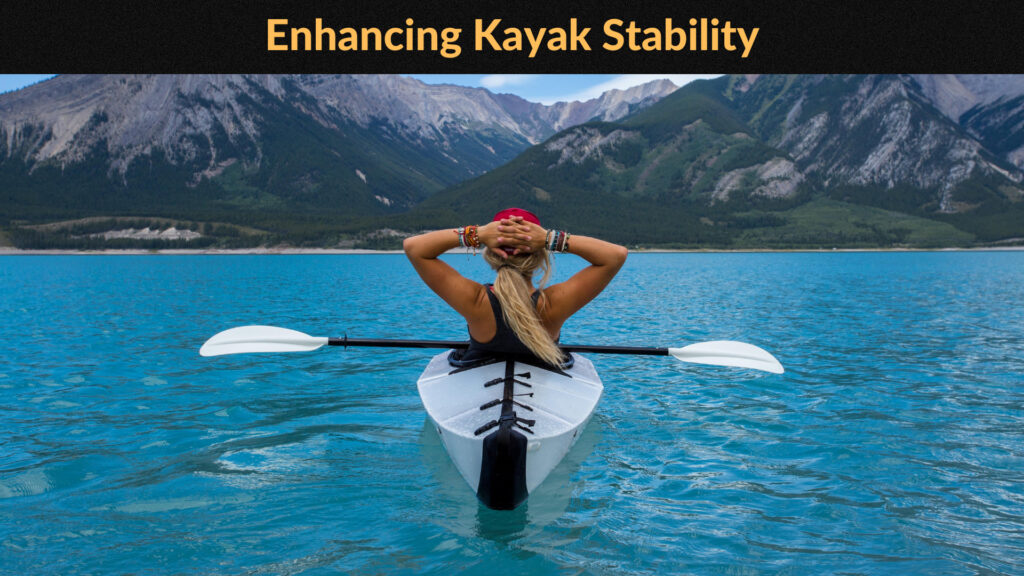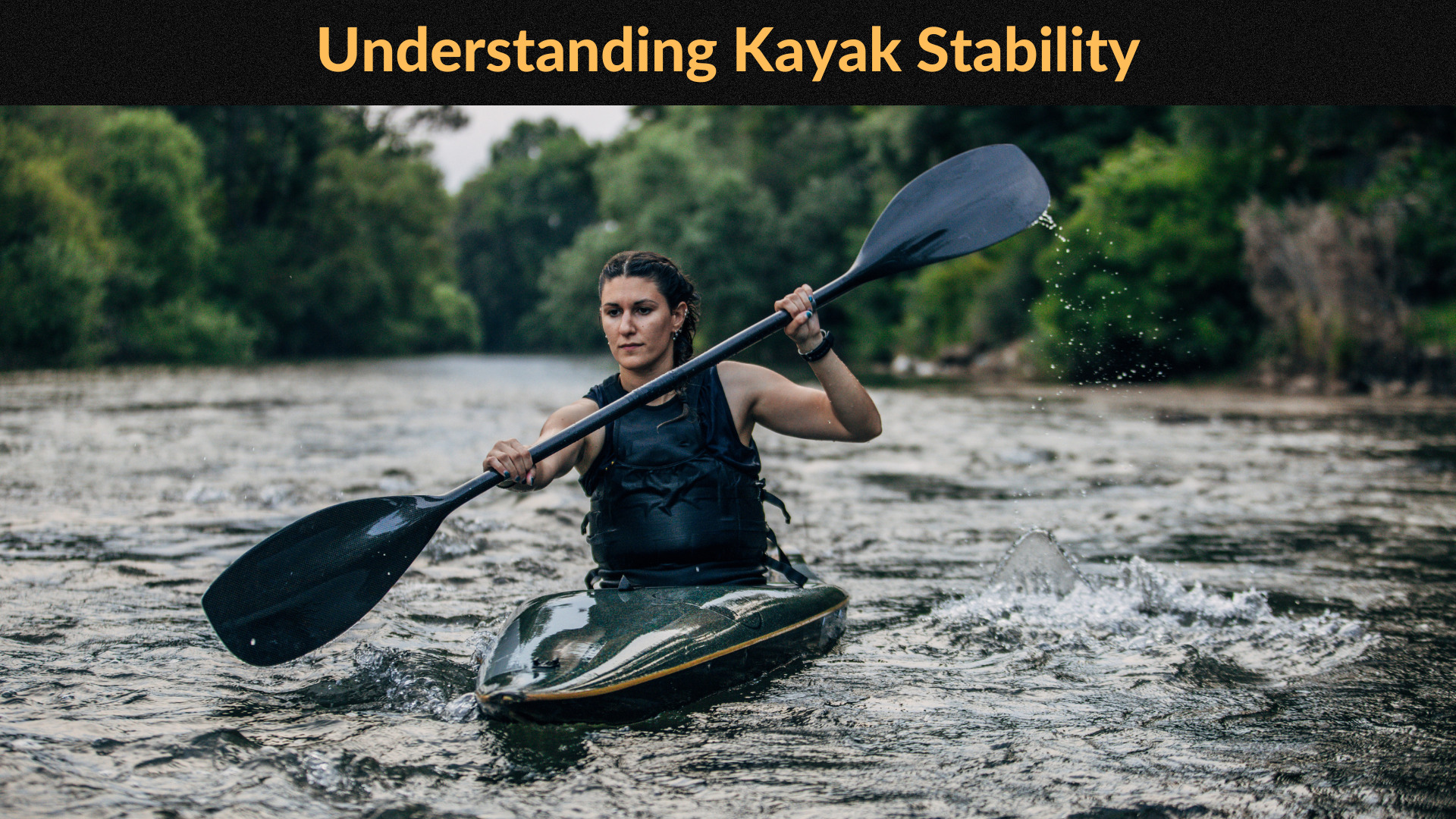Understanding Kayak Stability Levels | Guide To Mastering Balance On The Water
Understanding Kayak Stability
Kayaking is an excellent way to explore the outdoors and experience nature. Kayak stability is a critical factor to consider when choosing a kayak. Understanding kayak stability is crucial to ensure a safe and enjoyable kayaking experience.
The main issue is that kayak stability has been misunderstood by many people out there. So people have come to think of kayak stability as just the opposite of instability. And they think that in order to have stability, you need to use a different kind of paddle than the one you would normally use.
we will discuss the different types of kayak stability, tips to improve kayak stability, and how to choose a kayak based on its stability.
What is Kayak Stability?

understanding Kayak stability can be categorized into two main types: primary stability and secondary stability. Understanding these distinctions is essential for paddlers of all skill levels.
Primary Stability
Primary stability refers to the initial stability of a kayak when it is in an upright position. Kayaks with high primary stability feel more stable and secure on calm waters, making them suitable for beginners. These kayaks have a broader, flatter hull shape, allowing for better stability but potentially sacrificing speed and maneuverability.
Secondary Stability
Secondary stability, on the other hand, comes into play when a kayak is tilted or leaned to one side. It refers to the kayak’s ability to maintain balance in rougher conditions or when performing advanced maneuvers. Kayaks with high secondary stability have a narrower hull design, providing better responsiveness and maneuverability but may require more skill to handle.
Kayak Stability Chart Table
Here is an example table that compares the primary stability and secondary stability of different types of kayaks:
| Kayak Type | Primary Stability | Secondary Stability | Best Use |
|---|---|---|---|
| Recreational Kayak | Good initial stability (8/10) | Moderate secondary stability (6/10) | Calm, flatwater paddling, beginner-friendly |
| Touring Kayak | Moderate initial stability (7/10) | Good secondary stability (8/10) | Long-distance paddling, rougher water, intermediate/advanced paddlers |
| Whitewater Kayak | Lower initial stability (5/10) | Excellent secondary stability (9/10) | Rapids, whitewater, expert paddlers |
| Fishing Kayak | High initial stability (9/10) | Lower secondary stability (5/10) | Fishing, stability while standing |
Primary stability: refers to how stable a kayak feels when it is sitting flat on the water. A higher rating means that the kayak is less likely to tip over, making it easier for a paddler to feel confident and stable in calm conditions. Recreational and fishing kayaks generally have better primary stability because they have wider and flatter bottoms.
Secondary stability: refers to how stable a kayak feels when it is tilted to one side or the other. A higher rating means that the kayak is less likely to capsize when leaned over, making it more suitable for paddling in rougher conditions. Touring and whitewater kayaks generally have better secondary stability because of their rounded and more streamlined hull designs.
Best use refers to the type of paddling for which each kayak type is most suitable based on its stability ratings. Recreational kayaks are best for beginners and calm conditions, touring kayaks are best for longer-distance paddling and rougher waters, whitewater kayaks are best for expert paddlers navigating rapids, and fishing kayaks are best for anglers who need to be stable while standing.
I hope this more detailed chart table helps you understand kayak stability better!
Factors Affecting Kayak Stability

Several factors influence the stability of a kayak. Understanding these factors can help paddlers make informed decisions when choosing a kayak and improve their stability on the water.
Hull Design
The stability of the kayak is greatly influenced by the design of its hull. While a V-shaped or rounded hull improves secondary stability, a flat or pontoon-shaped hull offers higher primary stability. The kayaker’s tastes, the use for which it is intended, and the types of water conditions they anticipate using it in all influence the hull design selection.
Width and Length
A kayak’s width and length are also very important in understanding kayak stability. Wider kayaks are sometimes more stable at first, making them ideal for recreational or beginner paddling. On the other hand, longer kayaks offer better tracking and efficiency but may trade some stability.
Weight Distribution
Maintaining and Understanding kayak stability within the kayak depends on proper weight distribution. The heaviest objects should be positioned low and in the middle to improve stability. The risk of the kayak toppling over is diminished by a balanced weight distribution, which prevents the kayak from becoming top-heavy.
Paddler’s Technique
Understanding Kayak stability is also impacted by the paddler’s technique and level of expertise. Stability is increased by employing proper paddling techniques, which include keeping a relaxed posture, making efficient strokes, and utilizing your core muscles. Paddlers get better at keeping their balance and stability on the water as they practice and hone their skills.
Importance of Understanding Kayak Stability

prioritizing and Understanding kayak stability is essential for several reasons. Firstly, it enhances safety by reducing the likelihood of capsizing or tipping over, especially in challenging water conditions. Additionally, a stable kayak provides a more enjoyable paddling experience, allowing paddlers to focus on their surroundings and immerse themselves in nature without constant worry or instability.
Choosing the Right Kayak for Understanding Kayak Stability
Selecting a kayak that offers optimal stability is crucial, considering your paddling goals and skill level. Here are three common types of kayaks known for their stability:
Recreational Kayaks
Recreational kayaks are perfect for beginner and casual paddlers since they are made with stability and use in mind. Beginners can feel safe and secure on the water thanks to the wide hulls and good primary stability of these kayaks.
Touring Kayaks
Touring Kayaks are designed for touring balance stability, speed, and maneuverability. They are excellent for intermediate and expert paddlers who want to cover greater distances and navigate a variety of water conditions because they are narrower than recreational kayaks but also provide increased secondary stability.
Sit-On-Top Kayaks
Kayaks with a sit-on-top are renowned for their remarkable stability and usability. Because of their open layout and large, solid platform, they are well-liked for family vacations, fishing, and other entertainment. Beginners and people who prefer a more laid-back and flexible paddling experience appreciate sit-on-top kayaks in particular.
Enhancing Kayak Stability

While choosing a stable kayak is essential, there are also ways to enhance or to understanding kayak stability while on the water:
Practice and Experience
Understanding Kayak stability can be greatly enhanced with regular practice and exposure to various types of water. In their kayak, paddlers can gradually push their comfort and confidence levels. Paddlers can improve their balance, hone their technique, and adapt to changing conditions by suitably challenging themselves.
Balancing Techniques
Understanding Kayak Stability can be maintained by learning and using balancing skills. They can practice adjusting their weight, edging their kayak, and stabilizing themselves with their paddle. With the use of these moves, paddlers can alter their stability and balance in response to shifting water conditions.
Outfitting and Accessories
To enhance their of understanding kayak stability, paddlers can optimize their stability by utilizing the appropriate gear and accessories. Foam blocks or inflatable bags can dramatically boost buoyancy and stability when added as floatation devices. In a variety of water situations, these accessories offer additional support and aid in maintaining balance.
Paddlers can also obtain a balanced and comfortable posture by altering the foot bracing and seat position, which enhances their stability on the water. Paddlers can improve their overall awareness of kayak stability and have a safer and more stable kayaking experience by employing this gear and accessory alternatives.
Tips to Understanding Kayak Stability
Here are some tips to improve or to understanding kayak stability:
how to make your kayak more stable?

Kayaking can be a thrilling experience, but unstable kayaks can make it challenging and uncomfortable. If you’re struggling to maintain balance in your kayak, there are ways to make it more stable and enjoyable.
we discuss tips and techniques to help you make your kayak more stable, including adjusting your seating position, redistributing weight, and making modifications to your kayak. By following these tips, you can enhance your kayaking experience and feel more confident on the water. Read on to learn how to make your kayak more stable.
FAQ’s
What determines the stability of a kayak?
The stability of a kayak is determined by its design, including the shape of the hull, the width, and the length of the kayak. The wider the kayak, the more stable it is likely to be, while the longer the kayak, the less stable it may be.
What is the initial stability of a kayak?
Initial stability refers to the kayak’s stability when it is sitting flat on the water. A kayak with good initial stability feels stable when it is not tilted to either side, making it easier for a paddler to maintain balance in calm conditions.
What is the difference between primary and secondary stability in a kayak?
Primary stability and secondary stability are two different aspects of a kayak’s stability. Primary stability refers to how stable a kayak feels when it is not tilted to either side, while secondary stability refers to how stable a kayak feels when it is tilted to one side or the other. A kayak with good primary stability is less likely to tip over in calm conditions, while a kayak with good secondary stability is less likely to capsize when leaned over.
How stable are kayaks?
The stability of kayaks can vary depending on their design and intended use. Recreational and fishing kayaks tend to have better initial stability, making them more stable in calm conditions. Touring and whitewater kayaks tend to have better secondary stability, making them more stable in rougher conditions. Overall, kayaks can be very stable when designed and used correctly, but they require skill and attention to maintain balance on the water.
Conclusion
Kayak stability is an essential factor to consider when choosing a kayak. By understanding the different types of kayak stability and following these tips, you can improve your kayak stability and have a safer and more enjoyable kayaking experience. Remember to choose a kayak based on the type of water you will be paddling in and its stability rating.

